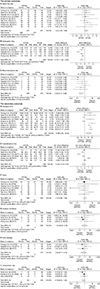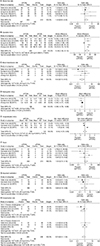2. Kukreja R, Desai M, Patel S, Bapat S, Desai M. Factors affecting blood loss during percutaneous nephrolithotomy: prospective study. J Endourol. 2004; 18:715–722.

3. Jackman SV, Docimo SG, Cadeddu JA, Bishoff JT, Kavoussi LR, Jarrett TW. The "mini-perc" technique: a less invasive alternative to percutaneous nephrolithotomy. World J Urol. 1998; 16:371–374.


4. Güler A, Erbin A, Ucpinar B, Savun M, Sarilar O, Akbulut MF. Comparison of miniaturized percutaneous nephrolithotomy and standard percutaneous nephrolithotomy for the treatment of large kidney stones: a randomized prospective study. Urolithiasis. 2019; 47:289–295.


5. Zhu W, Liu Y, Liu L, Lei M, Yuan J, Wan SP, et al. Minimally invasive versus standard percutaneous nephrolithotomy: a meta-analysis. Urolithiasis. 2015; 43:563–570.


7. Kandemir E, Savun M, Sezer A, Erbin A, Akbulut MF, Sarılar Ö. Comparison of miniaturized percutaneous nephrolithotomy and standard percutaneous nephrolithotomy in secondary patients: a randomized prospective study. J Endourol. 2020; 34:26–32.


8. Song L, Chen Z, Liu T, Zhong J, Qin W, Guo S, et al. The application of a patented system to minimally invasive percutaneous nephrolithotomy. J Endourol. 2011; 25:1281–1286.


9. Zhong W, Zeng G, Wu W, Chen W, Wu K. Minimally invasive percutaneous nephrolithotomy with multiple mini tracts in a single session in treating staghorn calculi. Urol Res. 2011; 39:117–122.


10. Tian X, Wan F, Liu D, Wang Z, Ge F. Comparison of standard and minimally invasive percutaneous nephrolithotomy for the treatment of complicated renal calculi. China Foreign Med Treat. 2011; 30:38–39.
11. Cheng F, Yu W, Zhang X, Yang S, Xia Y, Ruan Y. Minimally invasive tract in percutaneous nephrolithotomy for renal stones. J Endourol. 2010; 24:1579–1582.


13. Wang XQ, Wang CX, Hao YY. The comparison of minimally invasive tract and standard tract in percutaneous nephrolithotomy for renal stones. Eur Urol Suppl. 2011; 10:70–71.
14. Zhou J. Comparison of standard and minimally invasive percutaneous nephrolithotomy for the treatment of renal calculi. Med Forum. 2014; (25):3383–3384.
16. Yang L, Wang G, Du Y, Ji B, Zheng Z. Remote ischemic preconditioning reduces cardiac troponin I release in cardiac surgery: a meta-analysis. J Cardiothorac Vasc Anesth. 2014; 28:682–689.


18. Higgins JP, Thompson SG. Quantifying heterogeneity in a meta-analysis. Stat Med. 2002; 21:1539–1558.


19. Moher D, Liberati A, Tetzlaff J, Altman DG. PRISMA Group. Preferred reporting items for systematic reviews and meta-analyses: the PRISMA statement. PLoS Med. 2009; 6:e1000097.

20. Dindo D, Demartines N, Clavien PA. Classification of surgical complications: a new proposal with evaluation in a cohort of 6336 patients and results of a survey. Ann Surg. 2004; 240:205–213.


21. Fernström I, Johansson B. Percutaneous pyelolithotomy. A new extraction technique. Scand J Urol Nephrol. 1976; 10:257–259.

22. El-Nahas AR, Shokeir AA, El-Assmy AM, Shoma AM, Eraky I, El-Kenawy MR, et al. Colonic perforation during percutaneous nephrolithotomy: study of risk factors. Urology. 2006; 67:937–941.

23. Mishra S, Sharma R, Garg C, Kurien A, Sabnis R, Desai M. Prospective comparative study of miniperc and standard PNL for treatment of 1 to 2 cm size renal stone. BJU Int. 2011; 108:896–899. discussion 899–900.

24. Seitz C, Desai M, Häcker A, Hakenberg OW, Liatsikos E, Nagele U, Tolley D. Incidence, prevention, and management of complications following percutaneous nephrolitholapaxy. Eur Urol. 2012; 61:146–158.










 PDF
PDF Citation
Citation Print
Print






 XML Download
XML Download